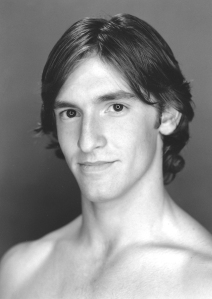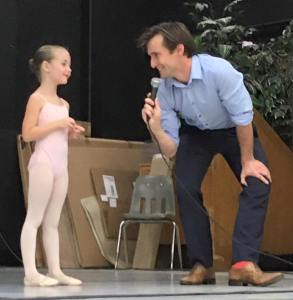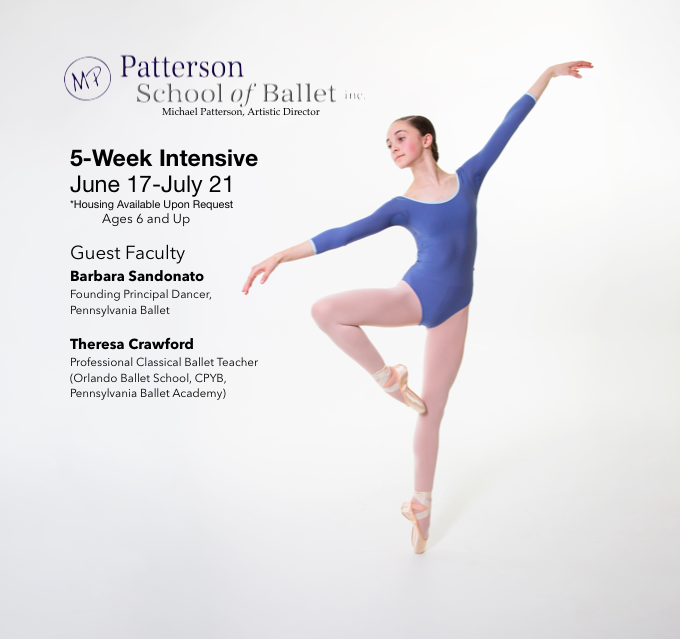
Teaching “One-Off” Classes

An Informational Blog about the Post-Performance Careers of Professional Dancers

One of my goals in creating this blog is not only to share my own stories and experiences as I navigate my post-performance career, but to also offer a platform for my peers to discuss what life is like after they have stepped off the stage. My first guest blogger for Dancing Offstage is Michael Patterson, Artistic Director of Patterson School of Ballet. I met Michael while he was teaching in the Philadelphia area and have followed him as he moved to Erie, PA, eventually opening his own school. Read on to hear his story and the challenges he has faced as he traverses his second career in dance. Enjoy!

There are many roads to opening and operating a pre-professional ballet school. This is my story. Every story starts somewhere and mine began in Titusville, PA on my family’s dairy farm.
Titusville’s claim to fame is Edwin L. Drake who is credited with the start of the oil industry and football’s John Heisman. Had it not been for PBS, I never would have known that ballet even existed; there were no dance studios in Titusville. No one that I knew had ever seen a ballet before. But at the age of 6, my sister and I were watching our local PBS station and The Nutcracker came on starring Gelsey Kirkland and Mikhail Baryshnikov. I remember being totally mesmerized by their grace and strength and we were glued to the television throughout the duration of the program. I told my mom shortly thereafter that I wanted to take ballet. Her response was, “if that’s what you want to do,” and she went back to work.
At the age of 11, after losing interest in other activities (including baseball, soccer, and piano lessons), I approached my mom and again asked if I could take ballet. This time she signed me up for classes with my sister at Cathy Turner’s Dance Studio in nearby Franklin, PA. It wasn’t until I was 12, at the recommendation of my teacher, that I began studying classical ballet under the direction of Sharon Filone in Erie, PA. Later, I studied at the Central Pennsylvania Youth Ballet under the direction of Marcia Dale Weary and then joined Pennsylvania Ballet in 2002.
While dancing with this company, I was given many opportunities to perform lead roles and toured internationally (with Edinburgh International Arts Festival in Scotland being a highlight). Though I was progressing within the company, I was battling an injury that wouldn’t heal, even with time off. It was at this point that I left Pennsylvania Ballet and began teaching for the legendary American ballerina, Barbara Sandonato, whose daughter I had danced with in the company.

Though I had taught at summer programs on lay-offs, this was my first experience teaching in a school where I was responsible for the long-term training of students. It was also here where I got a crash course in dealing with parents, staging choreography, and setting schedules. With Ms. Sandonato’s guidance, I was able to feel more comfortable in a classroom setting, as well as honing my abilities to produce results and mentor aspiring students. In 2013, I was approached by a local university back in Erie, PA to head their children’s dance program. This new proposition would also serve as an opportunity for me to resume my college education.
When I arrived in Erie, there were only three students enrolled in the program I was to head. In order to promote the school, I dropped off flyers at many of the local businesses and by mid-year had 12 students in my classes. The program was nearly self-sustaining when it was cut only nine months later due to an unforeseen financial situation at the university. I had already planned a summer intensive that had enrolled 20 students, and I was crushed. It was at this time that a family whose daughter was returning to the area (after many injuries at another school) asked if I was interested in starting a school. At the conclusion of my intensive, I decided to meet with a lawyer who helped me incorporate my own school. The Patterson School of Ballet was born on August 18, 2014.
In seeking a home for my school, I looked at many places. But due to financial constraints, I couldn’t afford to renovate a brand new space. As luck would have it, and with some persistence, I found a former yoga studio that was already equipped with a cushioned floor, mirrors, and had been modeled in a way that befit a dance school. The interior was a warm inviting atmosphere, reminiscent of a lodge, and didn’t have the clinical feel that most studios have. I wanted a studio where moms and dads would feel comfortable and guest teachers would feel welcomed. Also adding to the warmth of the studio was a gas fireplace, which is great for Erie winters, and double doors that can open during the summers to allow the warm lake breeze to pass through the studio.
There are many challenges in having a small business, especially a ballet school in Erie. First, the community is inundated with dance schools. I set out to make something different in our community using lessons instilled in me as a child . . . “jack of all trades, master of nothing.” Our students learn how to master classical ballet technique, which gives them the ability to evaluate other dance forms and learn them much more quickly. While they continue to make strides in their classical education, many of the students attend high schools in the area that offer other forms of dance as an alternative to their physical education requirements. So, our students still have the benefit of being exposed to other dance forms. As I mentioned previously, affordability prevented me from building the ideal studio I dreamt of right away. As the Patterson School of Ballet has grown, we recently held a successful fundraiser to raise enough money to build sprung floors in our studio, which will be much better for the long-term health of my students.

When it came to scheduling our Fall classes for the first time, there were many factors that were also challenging. Our greatest challenge was the limitation on evening class times for students. It was difficult to keep up with the numerous school districts, as well as private schools, so I spoke with many parents about class times that would be convenient for them. It was important for me to have my students take the necessary number of ballet classes that a serious program requires. Another aspect that was crucial to the success of the program was finding a pricing scale that was competitive with surrounding studios. Most studios in our area charge very little for classes, with most charging as little as $10/hour. The Patterson School of Ballet’s tuition begins at $10/hour, but as students take more classes the price drops so students that are taking 14 hours of class have an hourly rate that’s under $6/hour. Unlike other studios in our area, our program is all-inclusive, meaning that students have regular guest/master teachers at no additional cost and there are no costume, rehearsal, or performance fees associated with our program. Any rehearsals are in addition to class time, so as to not take away from the purpose of our pre-professional training curriculum. As they say, you get what you pay for. At Patterson School of Ballet, parents make an investment in their training, without ending up with a closet full of costumes.

The Patterson School of Ballet’s curriculum is unique to the area, as we keep small class sizes and a proven graded-level ballet syllabus. Our program offers superior training, but also provides many performance opportunities. Since our first summer program, Patterson School of Ballet has established a 5-week intensive, a super hero half-day camp, and an August intensive. We have had guest faculty and master teachers Theresa Crawford, Matthew Carter, Abigail Mentzer, Melissa Gelfin, Danae Patterson, Frank Galvez, Catherine Gurr, Halle Sherman, Bob Vicary, Elysa Hotchkiss Walls, and Barbara Sandonato (who serves as Artistic Advisor to our school). Our students have had the opportunity to watch company class with Pittsburgh Ballet Theatre, Pennsylvania Ballet, and the Joffrey Ballet, and have seen performances by them on numerous occasions. Our students also regularly participate in enrichment programs provided by Ballet In The City, where they’ve had the opportunity to work with Sonia Rodriguez, Francis Veyette, Lauren Fadeley Veyette, and other fabulous teachers. Performances include outreach with local non-profits in our area, in addition to our year end June Show. This year’s showcase will include Act II of Swan Lake with guest artists Catherine Gurr and Logan Martin.

It can be hard to deal with the competitive nature of having a business in the local dance community. But at the end of the day, I wouldn’t give up my school. While there are many in our community who are incredibly supportive, unfortunately, there are always those from other local organizations that will do or say anything to discredit you personally and professionally. However, it is very important for me to not let that enter in through the doors of my studio. Although the students are not my children, I do have a responsibility to mentor them and help them become the best version of themselves, both inside and outside the studio. My mission is to enrich children’s lives and provide opportunities for personal growth and achievement by utilizing the skills developed in the studio. Any program should be an investment in a child’s future. It is not only our goal to train professional dancers, but to also give students a clear understanding of what it takes to be good at something, to take pride in knowing that you do it well, and to aspire to be more.

Check out more about Patterson School of Ballet at www.pattersonschoolofballet.com